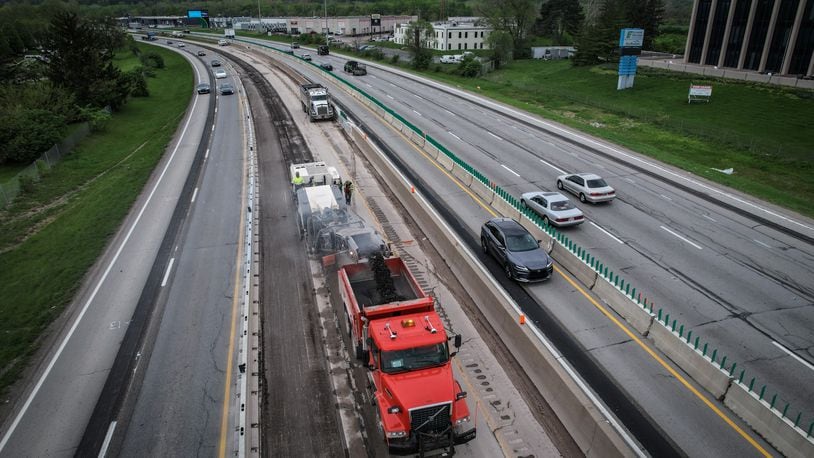For every massive continuing project for 2024 like the new U.S. 35-Trebein Road interchange in Greene County, there are dozens of smaller ones like repaving Spinning Road in Riverside or adding a sidewalk on West Stroop Road in Kettering.
In total, ODOT is investing $2.8 billion into 950 road and bridge projects statewide this year.
“Investing in efficient infrastructure is an investment in quality of life,” Governor Mike DeWine said. “Once complete, these projects will significantly reduce traffic congestion and improve roadway safety.”
While roads get the spotlight, ODOT’s kickoff event Thursday was at Taylorsville Metropark in Vandalia because of a bike project. Slated for a June start date, ODOT will provide funding for the $3.5 million Vandalia bikeway connector project from the existing bikeway along National Road at Foley Drive to the Great Miami River Trail in Five Rivers MetroPark near the Taylorsville Dam.
“We strongly believe this will be a transformational project, giving our residents a way to bike and make a connection with this trail, and also to give other users of this trail a way into our city to see what we have to offer,” Vandalia Assistant City Manager Rob Cron said Thursday.
A few prominent traditional road projects coming in Montgomery County this year include:
* Widening of Dayton’s Wayne Avenue hill south of Wyoming Street from four lanes to five, a $2.5 million project scheduled from May to November.
* Converting 3 miles of Dayton’s North Main Street from four lanes down to three between Great Miami Boulevard to Turner/Shoup Mill, a $6.4 million effort from June to October.
* The final months of a $10.3 million project to reconfigure the U.S. 35-Woodman Drive interchange into a “tight urban diamond” layout, which is scheduled to finish in September.
Not all local roadwork this summer involves ODOT, which is responsible for the highway transportation system, including federal and state routes outside of municipalities and all interstate routes.
Most local routes, including residential streets, are maintained by the city, village, county, or township, depending on where the route is located.
Though ODOT is not directly responsible for the upkeep of inter-municipality roadways, the agency can assist in various ways with maintenance and construction projects that are spearheaded by local jurisdictions.
“With the Vandalia bikeway connector project, the city is taking the lead and has the majority of responsibilities while ODOT is assisting with funding, providing some oversight, and offering some of our resources,” ODOT spokesperson Loryn Bryson said Thursday.
Credit: JIM NOELKER
Credit: JIM NOELKER
Carrie Koesters, construction engineer for ODOT District 7, said the agency typically operates under a home rule provision, which allows individual municipalities to take care of their own infrastructure.
However, depending on factors like pavement condition and cost, municipalities can request ODOT to lead a project.
When pavement on state and U.S. routes within local jurisdictions reaches the end of its life, ODOT contributes along with local municipalities to major resurfacing or reconstruction, Koesters said. This is often when the work is no longer considered maintenance, but falls under preservation.
“We’ll run those projects just like any other project we are responsible for,” Koesters said, adding that in these cases, ODOT may step in without being requested.
About the Author
